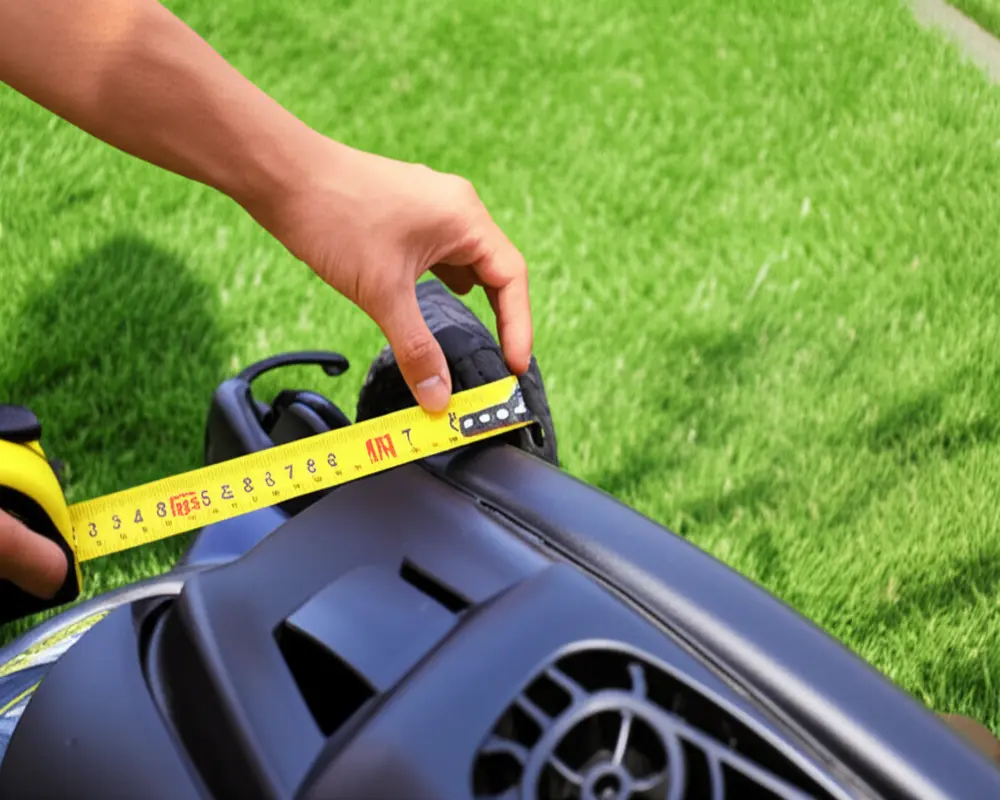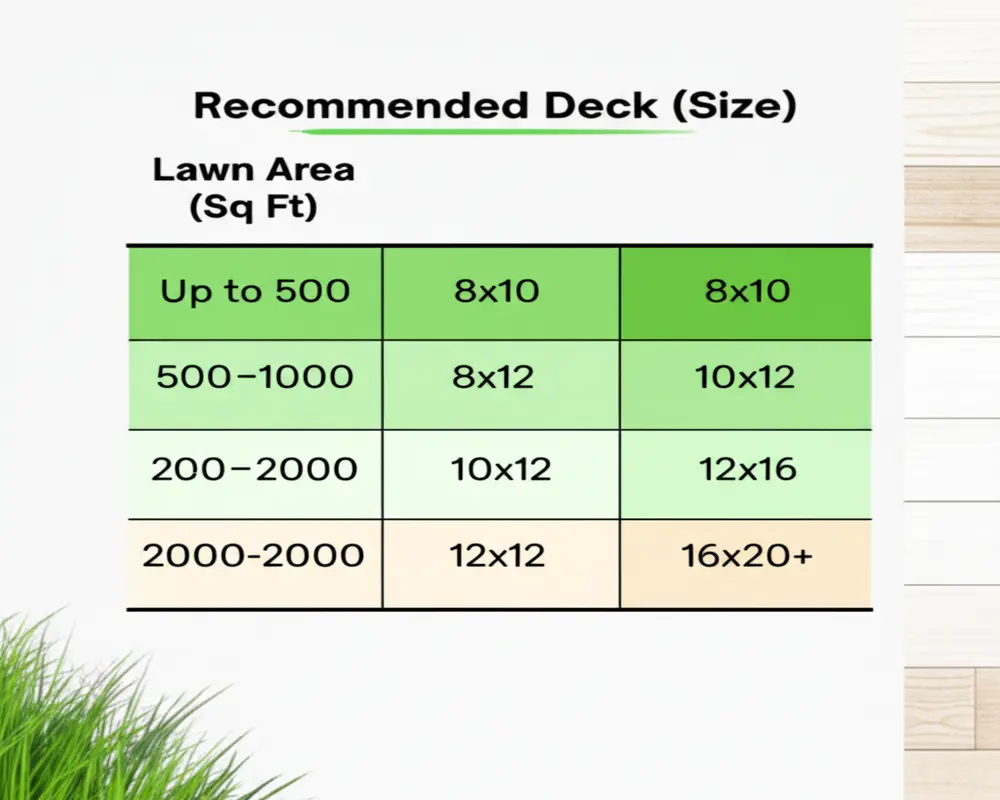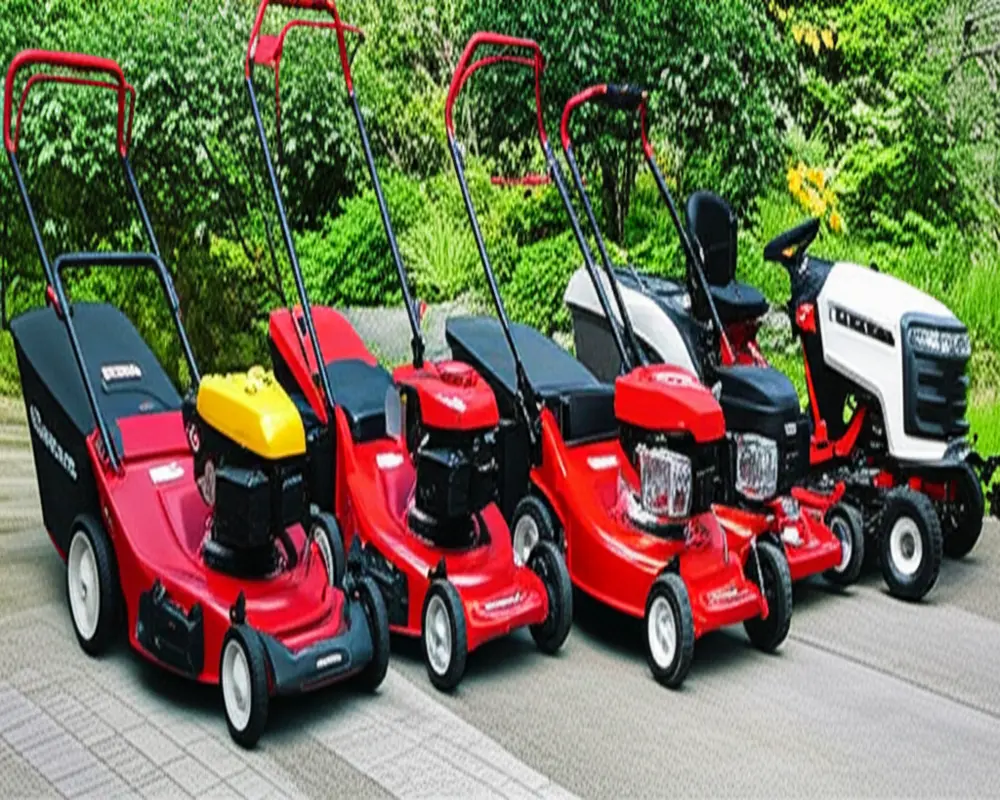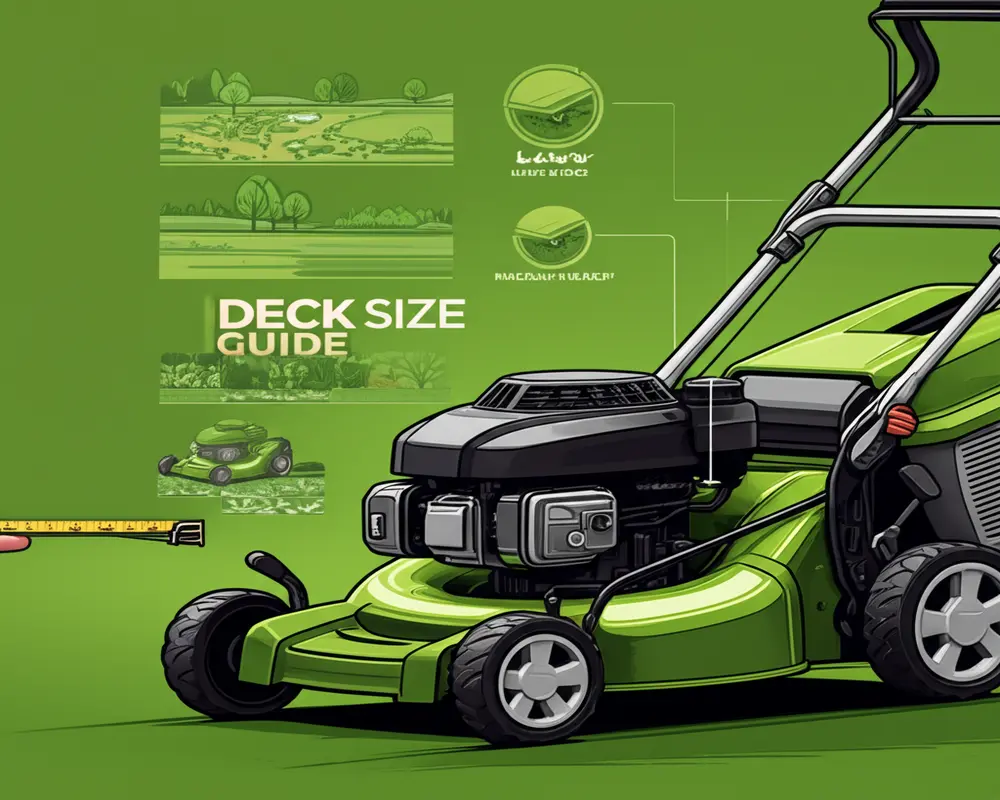The Ultimate Lawn Mower Deck Size Guide: Choose the Perfect Cut for Your Yard
When it comes to maintaining a well-groomed lawn, the lawn mower deck size plays a pivotal role in the efficiency and quality of your mowing experience. Choosing the right deck size can save you time, improve maneuverability, and deliver a professional cut that enhances your yard’s aesthetic appeal. This comprehensive guide will walk you through everything you need to know about lawn mower deck size, including how to measure your current deck accurately, understand the factors influencing deck size selection, and recommendations based on lawn area and mower types.
Thank you for reading this post, don't forget to subscribe!I. Introduction: Unlocking the Secret to a Perfect Cut
Understanding the importance of your lawn mower’s deck size is essential for optimizing your lawn care routine. The deck size refers to the width of the cutting area on your mower, which directly affects how much grass is cut in a single pass. This measurement influences the overall mowing time, fuel consumption, and the quality of the finish on your lawn.
In this guide, you will learn what exactly deck size means, why it matters, how to measure it accurately, and how to select the best deck size based on your yard’s size and terrain. Whether you’re a beginner or looking to upgrade your equipment, this article will equip you with expert knowledge to make an informed decision.
II. What Exactly is Lawn Mower Deck Size?
A. Defining “Deck Size”
The deck size of a lawn mower is the cutting width, which is the span of the cutting blades’ reach. It is important to note that deck size is not simply the physical width of the mower’s deck housing but specifically the width of the area where the blades cut the grass.
Manufacturers typically measure deck size using two methods: the blade tip-to-tip measurement and the width of the deck housing. The blade tip-to-tip measurement refers to the total length from one blade tip to the other, while the housing width includes the physical deck edges which may be slightly wider. Industry standards usually focus on the blade tip-to-tip dimension as the true representation of cutting width.
B. Common Misconceptions
One common misconception is that a larger deck size always means a better mower. While bigger decks can cover more ground in less time, they may not be suitable for all yard types, especially those with tight spaces or complex landscaping. Also, a larger deck requires a more powerful engine to maintain cutting efficiency, so there is a relationship between deck size and engine size that should be considered.
III. Why Deck Size Matters: Impact on Your Mowing Experience
A. Mowing Efficiency & Time Savings
A larger deck size can significantly reduce the number of passes needed to mow your lawn, resulting in time savings. For instance, if you have a 1-acre yard, a mower with a 54-inch deck can cut the grass faster than a 30-inch deck mower because it covers more area per pass. This means fewer turns and less overlap, which translates to less time spent mowing and lower fuel consumption.
B. Maneuverability & Obstacle Navigation
Smaller decks excel in maneuverability, making them ideal for yards with many obstacles like trees, flower beds, or fences. They allow for tighter turns and more precise cuts around intricate landscaping features. On the other hand, larger decks are better suited for open, flat areas where speed and coverage take precedence over tight maneuvering.
C. Cut Quality & Finish
The design of the deck, blade overlap, and mower stability influence the quality of the cut. Larger decks can sometimes lead to scalping if used on uneven terrain because the wide cutting width may not conform well to slopes or bumps. A well-designed deck with overlapping blades ensures an even cut without striping or missed patches.
D. Storage & Transport
Consider the mower’s footprint when it comes to storage and transportation. Very large decks can be challenging to store in a typical garage and may require special transport arrangements when moving the mower. Smaller decks usually fit more easily into storage spaces and vehicles.
E. Fuel Consumption
Larger decks usually pair with more powerful engines that consume more fuel. If fuel efficiency is a priority, balancing deck size with engine power is vital to avoid unnecessary operating costs.
IV. How to Accurately Measure Your Current Lawn Mower Deck
Knowing your current mower’s deck size helps in assessing whether you need to upgrade or replace it for your lawn’s requirements.
A. Tools Needed
Gather a tape measure and gloves for safety.
B. Step-by-Step Instructions
Before measuring, ensure safety by disconnecting the spark plug and removing the ignition key to prevent accidental starts. Position the mower on a flat, even surface.
Measure the cutting width by placing the tape from the tip of one blade to the tip of the opposite blade. This gives you the blade tip-to-tip measurement, which is the actual cutting width. Additionally, measure the overall deck housing width for storage reference.
Cross-check your measurements with the manufacturer’s specifications, which can usually be found in the mower manual or online product page.

C. Understanding Stated vs. Actual Cutting Width
Manufacturers often state the deck size based on blade tip-to-tip measurement, but sometimes the actual cutting width may be slightly less due to blade overlap or deck design. This difference usually ranges from 1 to 3 inches and is important to consider when comparing mowers.
V. Choosing the Right Deck Size: Recommendations by Lawn Area & Type
A. Quick Reference Table: Deck Size by Lawn Area
| Lawn Size / Area | Recommended Deck Size (inches) | Typical Mower Type | Key Considerations |
|---|---|---|---|
| Small (Under 1/4 acre / <10,000 sq ft) | 20-30 | Push, Electric, Small Riding | High maneuverability, easy storage |
| Medium (1/4 – 1/2 acre) | 30-46 | Push, Smaller Riding | Balance between efficiency and agility |
| Large (1/2 – 1 acre) | 46-54 | Riding, Zero-Turn | Time-saving for open lawns |
| Very Large (1+ acre) | 54+ | Zero-Turn, Tractor | Maximum efficiency, heavy-duty use |

B. Factors Beyond Lawn Size
1. Terrain Complexity
Flat lawns allow for larger deck sizes, while hilly or uneven terrain might benefit from smaller decks for better control and safety. Yards with many obstacles require nimble mowers with smaller decks for precise navigation.
2. Mower Type
Selecting a deck size also depends on the type of mower. Push mowers typically have smaller decks, ranging from 20 to 30 inches, suited for small lawns. Self-propelled and robotic mowers may vary but generally keep a moderate deck size for balance. Riding mowers and zero-turns are designed to handle larger decks, providing efficiency for expansive lawns.

3. Engine Horsepower & Displacement
Matching engine power with deck size is crucial. A large deck requires a powerful engine to maintain blade speed and cut quality. Undersized engines can lead to poor cutting performance and increased wear.
4. Personal Preferences & Physical Capability
Your comfort and physical capability play a role in deck size choice. Smaller decks are lighter and easier to handle, while larger decks can be more demanding to operate. Storage space at home also dictates the feasible size of your mower.
5. Budget Considerations
Typically, larger decks come with higher initial costs and increased operational expenses like fuel and maintenance. Assess your budget not just for purchase but for ongoing upkeep.
VI. Pros and Cons of Different Deck Sizes
A. Smaller Decks (<30 inches)
Pros include superior maneuverability, easier storage, and lower upfront cost. However, they require more passes over larger yards, increasing mowing time and physical effort.
B. Medium Decks (30-46 inches)
These offer a balanced approach, with decent efficiency and manageable size. They serve well for medium-sized yards but may still be time-consuming for very large properties.
C. Larger Decks (46+ inches)
Designed for maximum efficiency, larger decks reduce mowing time significantly. The trade-offs include reduced maneuverability, higher cost, and more challenging storage and transport.
VII. Beyond Deck Size: Other Key Mower Features to Consider
While deck size is important, other features affect your mowing experience:
- Engine type and power: Gas, electric, or battery-powered options each have pros and cons.
- Transmission options: Manual vs. hydrostatic or automatic transmission impacts ease of use.
- Cutting height adjustment: Easy height control enhances versatility for different grass types.
- Discharge options: Bagging, mulching, or side discharge affect lawn health and maintenance.
- Comfort features: Ergonomic handles, padded seats, and vibration reduction improve operator comfort.
- Durability and build quality: Consider deck material and construction for long-term reliability.
VIII. Maintenance Tips Related to Your Mower Deck
Proper maintenance of your mower deck ensures consistent performance and prolongs the life of your equipment:
- Routine cleaning: Remove grass clippings and debris after each use to prevent buildup and rust.
- Blade sharpening: Keep blades sharp for a clean cut. Sharpen or replace blades as needed.
- Inspect for damage: Check for dents, cracks, or misalignment that may affect cutting quality.
- Belt maintenance: Inspect and replace belts to prevent slippage and maintain blade speed.
IX. Frequently Asked Questions (FAQs)
- Can I upgrade to a larger deck?
- Upgrading depends on your mower model compatibility and engine power. Consult the manufacturer or a professional before attempting an upgrade.
- Does deck size impact engine lifespan?
- Using a deck size too large for your engine can strain the motor, potentially reducing its lifespan. Always match deck size with engine specifications.
- How often should I clean under the deck?
- Clean under the deck after every mowing session to prevent buildup and corrosion.
- What are the differences between stamped and fabricated decks?
- Stamped decks are pressed from a single sheet of metal, generally lighter and less expensive. Fabricated decks are welded from multiple metal pieces, offering greater durability and performance.
- Is wider always better for larger acreage?
- While wider decks can cover more ground, the terrain and mower power must support it. Sometimes, a slightly smaller deck with better maneuverability is more effective.
X. Conclusion: Making Your Informed Decision
Choosing the right lawn mower deck size is a balance between efficiency, maneuverability, terrain, and personal preferences. A well-chosen deck size saves time and effort while ensuring your lawn looks professionally maintained.
Assess your lawn’s size, shape, and obstacles, consider your physical capability and storage options, and weigh your budget carefully. By understanding these factors and following the guidelines in this article, you will be well-equipped to invest in a mower deck that perfectly suits your yard’s needs.
For further expert advice on lawn mower options and features, you can explore Lowe’s Lawn Mower Buying Guide, or dive into detailed insights like Bob Vila’s Lawn Mower Deck Sizes Explained.
Additionally, understanding the features and innovations from trusted brands like John Deere can help you choose a mower that fits your style and requirements. For practical tips on mower use, Family Handyman’s Lawn Mower Tips is a valuable resource.
By making an informed choice, your mower will not only cut your grass but also enhance your overall lawn care experience.

